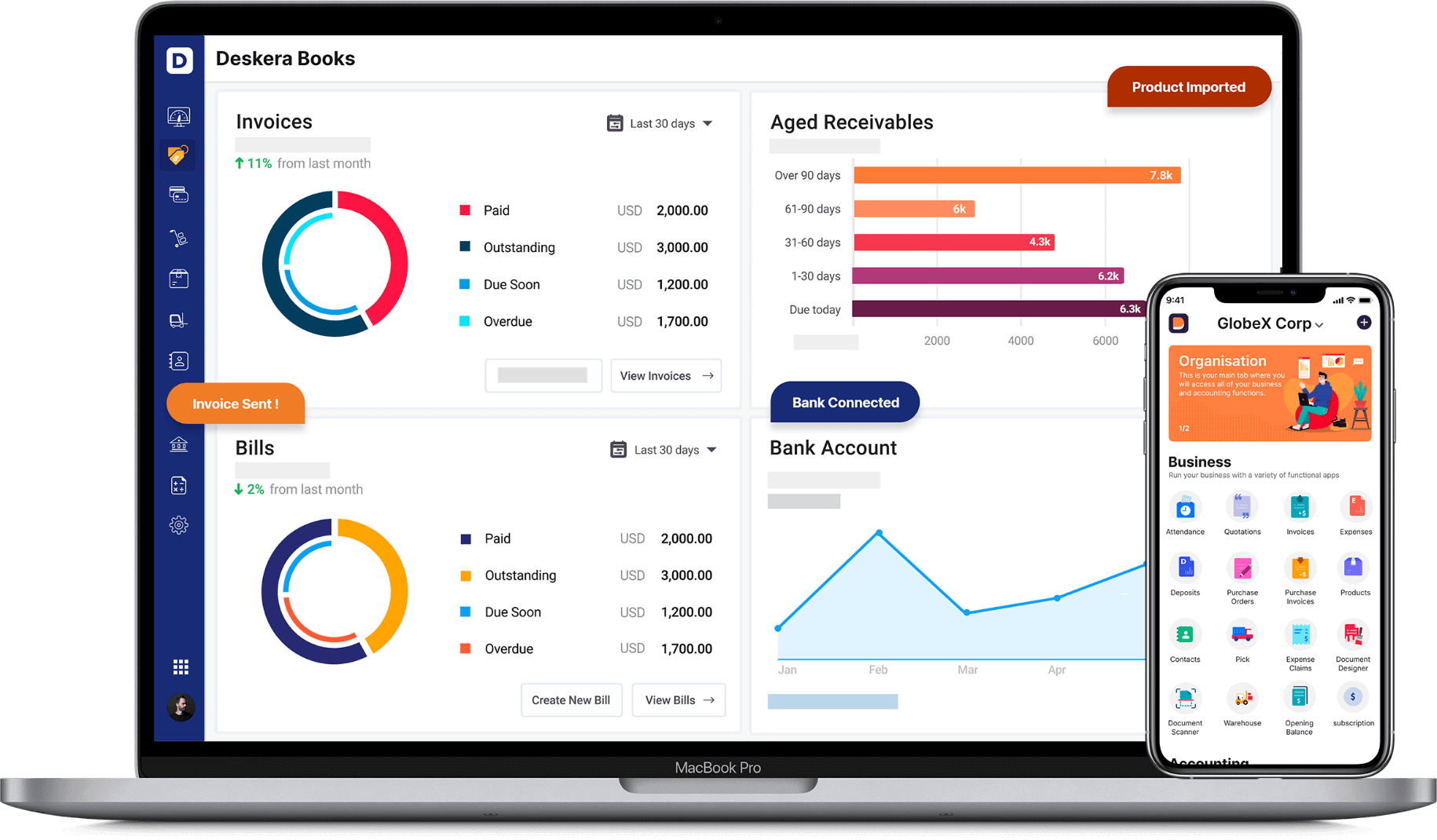The term "tax liability" refers to the amount you need to pay to the tax authorities or the Internal Revenue Service (IRS) at the end of each financial year. The ideal way is to reduce your tax liability by tracking deductions and optimizing your filing strategies.
Compare your income to the deductions, allowances, and credits you are entitled to. It is the responsibility of every US citizen to be legally responsible for paying his taxes on time. Total tax liability may consist of several components, including unpaid taxes from the previous year. Smoothen the way you file and pay your taxes.
Let us look at the Tax Liability as specified by the IRS in 2022.
Single Taxpayers
|
Taxable income (USD) |
Tax rate (%) |
|
0 to 10,275 |
10 |
|
10,276 to 41,775 |
12 |
|
41,776 to 89,075 |
22 |
|
89,076 to 170,050 |
24 |
|
170,051 to 215,950 |
32 |
|
215,951 to 539,900 |
35 |
|
539,901+ |
37 |
Married Taxpayers Filing Jointly
|
Taxable income (USD) |
Tax rate (%) |
|
0 to 20,550 |
10 |
|
20,551 to 83,550 |
12 |
|
83,551 to 178,150 |
22 |
|
178,151 to 340,100 |
24 |
|
340,101 to 431,900 |
32 |
|
431,901 to 647,850 |
35 |
|
647,851+ |
37 |
Head-of-Household Taxpayers
|
Taxable income (USD) |
Tax rate (%) |
|
0 to 14,650 |
10 |
|
14,651 to 55,900 |
12 |
|
55,901 to 89,050 |
22 |
|
89,051 to 170,050 |
24 |
|
170,051 to 215,950 |
32 |
|
215,951 to 539,900 |
35 |
|
539,901+ |
37 |
Married taxpayers filing separately
|
Taxable income (USD) |
Tax rate (%) |
|
0 to 10,275 |
10 |
|
10,276 to 41,775 |
12 |
|
41,776 to 89,075 |
22 |
|
89,076 to 170,050 |
24 |
|
170,051 to 215,950 |
32 |
|
215,951 to 323,925 |
35 |
|
323,926+ |
37 |
Table of Contents
- The Definition of Tax Liability
- Features of Tax Liability
- Understand tax liability
- Types of tax liability
- Step by step Procedure to calculate tax liability
- How to find tax liability on the 1040 form
- Special considerations: line 16
- Here's how to reduce your tax liability
The Definition of Tax Liability
The definition of tax liability is the money you are obliged to pay as taxes to the government. If your income is low enough, you will not be taxed at all. And there are many Americans who don't pay any taxes as many pay federal income tax or payroll tax through their work. There are also state and local taxes, excise taxes, and other taxes that generate income for very low-income people.
Features of Tax Liability
- As individuals and organizations, you are obligated to pay taxes when you earn income, make sales, and issue payslips. Each billable event generates a fixed amount of tax liability calculated as a percentage of the total.
- Tax liability also arises from the wages and salaries you earn. The employer withholds a portion of wages and salaries to meet the debt of individual taxpayers. If the amount is less than the taxpayer's total tax liability for the year, the individual must pay the unpaid difference. If the taxpayer's total tax liability is exceeded, the difference will be refunded.
- Some taxpayers are subject to double taxation. For example, if the business owner and the company are separate legal entities, the company's income is taxed, and the owner's personal income is also taxed. However, sole proprietors, partnerships, and LLCs are not subject to double taxation.
- Sales tax is another form of tax liability. When a company sells a product, most states and local governments collect sales tax as a percentage of total sales. This amount is included in the amount charged to the customer. Companies transfer sales tax to authorities on a monthly or quarterly basis.
- The company's payslip creates a tax liability. Companies must withhold income tax from employee salaries and social security and Medicare taxes.
- Individuals and businesses can reduce their total tax liability by requesting deductions, tax exemptions, and tax credits. Many individuals claim a standard deduction, but you can claim a deduction if you have enough personal and business expenses.
- In some states, the United States does not collect sales tax. In addition, individuals may not be liable for income tax if the total amount of unpaid tax is zero or if their income is below the level that requires a tax return.
Understand Tax Liability
Taxes are collected by various agencies such as the federal, state, and local governments and are used to pay for services such as road repairs and national defense. Therefore, you must know the tax base of the event and the tax rate of the tax base.
Example of tax liability
Let us look at how income tax is calculated:
1. Assume that the total income reported by Adriane on the IRS-W2 form at the end of the year is $70,000. With a federal tax rate of 22% on this income level, Adriane’s tax liability will be $15400 based on the tax rate.
You owe 10% for the first $9,950 of income, 12% for the next $ 30,575, and 22% for the last $ 19,475.3. Suppose Adriane’s W4 causes the employer to withhold $ 5,500 in federal tax that year, and she pays $1,000 in tax as advance.
If Adriane submits Form 1040, her tax return, the remaining tax amount will be the tax liability of $15400 minus the withholding of $5,500 and the payment of $1,000
Example of tax liability Income tax
2. Simon earns a total income of $40,000, which is reported to the Internal Revenue Service (IRS) in the W2 form. With a federal tax rate of 20%, Franz's income tax liability is $8,000. In his W4 filing, Simon’s employer withheld $6,000 in federal taxes, and Franz paid $1,000 as advance tax during the year. If he submits a personal tax return on Form 1040, the remaining tax amount is $8000 - $6,000 - $1,000 which is equal to $1,000. If Simon’s employer withholds only $3,000, Simon is in debt to the IRS for $4,000.
Types of Tax Liability
1. Small Business Tax Liability
Your business may be subject to tax liability from many taxable events:
- Billable events are transactions that give rise to tax liability
- If your business encounters a paid event, you will need to pay the appropriate tax authorities
- Franchise or excise tax liability is some more common tax liability encountered by many small business owners.
2. Income tax liability
Employers are generally subject to federal income tax, and in some cases, state and local income taxes are levied on their income. The employer withholds income tax liability from the employee's wages. However, if you are a small business owner, you will not receive any compensation (unless you are incorporated). And if you are not paid, you do not have income tax withholding from your income. Unless you are a legal entity, your income tax liability may also include a tax on your business income. You can also pay your income tax liability by making an estimated tax payment throughout the year.
3. Trade tax liability
Your company must pay taxes on its profits. However, if you build your business as a sole proprietorship, partnership, S-Corporation, or LLC, you can benefit from pass-through taxation. Pass-through taxation means that sales tax passes through the company and is passed to you. Therefore, the consumption tax liability is declared as income on the personal income tax return.
As an independent legal entity, your company is obliged to pay taxes on the company's profits. Corporate tax is added to the tax you pay on your income as an individual. Your C Corp is subject to a state corporate income tax rate, and your business may also pay state corporate tax.
4. Self-employed tax liability
Employed people must pay social security and Medicare taxes on their income. For employees, these taxes are deducted from wages in FICA taxes, which are employee and employee taxes. The self-employed tax covers both the employer and employee portion of the social security tax and the Medicare tax. You can pay self-employed tax by estimated tax payment.
5. Payroll tax liability
If you have employees, you must pay payroll taxes and employer tax. The money you withhold from your employees and the money you spend as an employer form your income tax liability. These taxes must be filed with the IRS according to the filing schedule.
6. Consumption tax liability
If you sell products and services to your customers, you will need to collect sales tax. After collecting sales tax from the customer, sales tax will be levied. You need to send sales tax to the state or local government, a percentage of the customer's total bill.
7. Capital gains tax liability
If you sell an investment or other type of asset for a profit, you may incur capital gains tax liability. Your profit is the difference between what you bought the asset and what you sold it.
8. Property tax liability
Property tax is a tax paid by a real estate owner to a local government and it varies significantly. Your tax liability depends on the value of your asset. Local governments usually reassess tax rates each year. Calculate property tax liability by multiplying the tax rate by the property's market value.
Step by Step Procedure to calculate tax liability
Taxable income minus tax credits is equal to your total tax liability. Therefore, your total tax liability minus the tax credits you are eligible to receive is equal to your total income tax liability.
Step 1 - What is your type of entity?
There are many types of entities (C Corp, partnerships, sole proprietors, etc.). But there's only C corp that pays corporate income tax. If your company is not C-Corp, it is called a "flow-through" company as profits and losses flow through the company to the owners and shareholders, who pay taxes at their respective tax rates.
Step 2 - Calculate Estimated Quarterly Tax
Follow the step-by-step estimated quarterly tax calculation tool to check your outstanding amount.
Step 3 - What is your business structure?
How to determine the tax rate if you are C Corp The Tax Reduction Employment Act has significantly simplified C Corp’s tax calculation by replacing the step-by-step corporate tax rate scheme, which includes eight different tax rate brackets, with a flat tax rate regardless of the taxable income of the corporation.
Step 4 - Double taxation on C corporations
Due to the structure of the tax system, C Corp is taxed twice at the corporate level and the shareholder level and the profit is distributed to the owner as a dividend. Therefore, if Company X distributes all or part of the $10000 revenue to the owner, he will have to pay the tax again when filing a separate tax return. One way for companies to avoid this double taxation is to incorporate it as an S corporation instead of a C corporation. Income is not taxed at the corporate level because S corporations are flow-through entities. However, choosing the status of an S corporation has certain drawbacks that can outweigh tax savings.
Step 5 - How to determine the tax rate if it is not C-Corp
If your company is not C-Corporation, it means that it is a flow-through entity. This means that the company pays the tax itself, not the tax. The tax rate depends on your company's taxable income and tax status.
Step 6 - Reduce taxes with credits and deductions
You can reduce your tax liability through tax credits. If you can't claim a lot of deductions, it's probably a good idea to claim a standard deduction. You must check out the large list of small business tax deductions.
Step 7 - Make an estimated tax payment
Many business owners believe that their income tax payment deadline is the "tax payment date" in mid-April. However, federal income tax must be paid when it occurs. This means that most small businesses must make an estimated tax payment throughout the year based on an estimate of total taxable income at the end of the year.
Step 8 Pay employment tax liability
In addition to income tax, your small business has to pay payroll tax on wages paid to employees and yourself. This is true regardless of industry or employee presence. These taxes typically include:
- Social Security Tax
- Medicare Tax
- Federal Unemployment Tax (or FUTA)
Some of these taxes are paid by the employee, but the company is responsible for withholding money from wages and sending it to the IRS. As a self-employed sole proprietor, you will have to pay self-employed tax. This is the sum of social security and Medicare tax liability. This is because there is no other employer to pay half the tax.
Step 9 - Pay your Tax Liability
Once you understand how much remaining tax liability you owe to the authorities, you need to pay the tax.
How to find tax liability on the 1040 form
In recent years, the IRS has tried to make some changes to the 1040 form to make it a little easier to fill out.
- Line 24 shows the total tax amount for the year after deducting deductions and credits. This is the amount you should pay before deducting the amount you paid throughout the year from your withholding tax.
- On line 25, enter the amount you have already paid the tax. You can enter the withholding amount from W2, 1099, and other forms.
- Lines 26-31 can list other payments you have made and additional credits you can charge.
- Sum up rows 25, 26, and 32 to find out how much you have already paid with taxes and additional credits, or the total amount paid.
- This total is on line 33. Now, if your total tax (line 24) minus your total payment (line 33) is equal to zero! This is because you haven't borrowed anything, you cover your tax liability all year round.
- If line 33 (payment and additional credits) exceeds line 24 (total tax liability), you will be reimbursed for the overpaid amount.
- But if line 24 is higher than line 33, enter the difference on line 37. The IRS makes it easy to create this line by labeling it with the unpaid amount.
Special considerations: line 16
Line 16 on the second page of Form 1040 is the total tax liability for the IRS. This total can look high. However, when calculating your tax liability, you will adjust for federal income tax withholding, deductions, tax exemptions, and tax credits to calculate the amount of unpaid tax currently payable. In case of overpayment, it will be refunded at the end. On the other hand, if you have a low wage, you owe a little more to the IRS.
Here's how to reduce your tax liability
Make sure you claim all the deductions you can claim. This can be very helpful with tax preparation software or the services of an accountant, but you can do it yourself. If you want to reduce your tax liability, you can also adjust your payroll tax exemption by submitting a new W4 to your employer.
Another common way to reduce your tax liability is to donate to a charity. Donations to qualified charities are tax-deductible. In addition, tax credits reduce your taxable income, which further diminishes your tax liability. Providing money and other assets is a great way to reduce your tax burden and support the causes of interest. It is important to receive proper documentation for all donations. And, of course, donations can only be deducted if you choose to itemize your deduction instead of receiving a standard deduction.
Donations to Roth IRAs will be made in post-tax dollars and will not reduce your tax liability for the year you donate.
Conclusion
Whether you are a business owner or an individual, understanding your tax liability in advance can help you avoid the surprises of this tax season. However, the unpredictable nature of taxes is one of the reasons why it is important to maintain emergency funding. Even if your tax liability varies from year to year, you can fully cover the difference.
How can Deskera Help You?
Deskera Books can help you automate your accounting and mitigate your business risks. Creating invoices becomes easier with Deskera, which automates a lot of other procedures, reducing your team's administrative workload.

Learn about the exceptional and all-in-one software here:
Key Takeaways
- Tax liability is the total amount of tax that you are entitled to pay to the IRS – or tax authority
- Income tax, sales tax, and capital gains tax are all forms of tax liability
- Taxes are collected by various tax agencies such as the federal, state, and local governments and are used to pay for services such as road repairs and national defense
- Individuals and businesses can reduce their tax liability by claiming deductions, tax exemptions, and tax credits
- Tax liability is obligatory to pay the IRS or other tax authorities after filing a tax return
- Your current annual tax liability appears on the 37th line of form 1040
Related Articles












